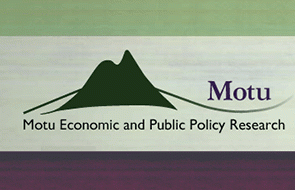
New research from Motu Economic and Public Policy Research looks at whether New Zealand can change the way we use land to achieve our emissions target in the lowest cost way. Under the Paris Agreement, New Zealand must transition toward a net-zero-emissions economy.
“Our paper uses land-use models to simulate how changes in the way land is used can mitigate greenhouse gas emissions,” said Suzi Kerr, Senior Fellow at Motu and one of the authors of the report. “We focus on what landowners can do cost-effectively but we don’t discuss who should bear the cost of any changes.”
The report also looks at the potential economic and social impacts of changes in land-use. It is part of a suite of reports from the Biological Emissions Reference Group used to inform the Ministry for the Environment and Ministry for Primary Industries about how to reduce biological emissions and the costs and opportunities of doing so.
“Achieving a 50 percent reduction in land-sector emissions by 2050 (beyond reductions through the current Emissions Trading Scheme) would be possible even with no new horticulture and no new on-farm mitigation technology. It would, however, require planting a lot of trees” said Dr Kerr.
The modelling suggests that roughly half of the new forest area will come from land currently covered by scrub. The rest is likely to come from conversions from sheep and beef farming with a small decrease in dairying.
“It would be possible to reach a 2030 target of a 30 percent reduction in land-sector emissions, but this will be harder to meet because of the speed of change required and the large costs this rapid change would impose,” said Dr Kerr.
“Our modelling also shows that if we were able to double the size of Aotearoa’s current horticulture sector it would reduce greenhouse gas emissions as much as full implementation of a methane vaccine,” said Dr Kerr.
If the horticulture sector can grow rapidly, it would bring large increases in revenue, which are likely to offset any corresponding revenue losses in pastoral agriculture.
The modelling suggests small losses of employment in the dairy and sheep-beef sectors as they expand less or gradually contract but these are more than offset by increases in forestry employment.
“If Aotearoa carries on as it is now, our research showed that there would be around 86,500 people employed full-time in the agricultural sector. If we are able to build up horticulture and forestry, this could increase to 136,900 full-time employees. These jobs would however sometimes be in different places and require different skills,” said Dr Kerr.
The Emissions Trading Scheme remains important in encouraging land use change. However, the report concludes that, even if biological emissions from agriculture were included in the ETS, the emissions price alone would be unlikely to be sufficient to induce efficient land-use change.
“Many farmers and Māori trusts will need some kind of help in transitioning land towards horticulture and forestry if the transition is to be a positive one for the rural sector,” said Dr Kerr.
“To supplement the changes encouraged by the ETS, landowners will need more information and training. There will also need to be support from government and from the horticultural sector as a whole, and probably changes in regulation, to help farmers produce new products and access international markets for these new products,” said Dr Kerr.
The research uses three models: Motu’s Land Use in Rural New Zealand model, Manaaki Whenua – Landcare Research’s New Zealand Forestry and Agriculture Regional Model, and Infometrics’ Energy Substitution, Social Accounting Matrix.
The paper Land-use Change as a Mitigation Option for Climate Change by Zack Dorner, Utkur Djanibekov, Tarek Soliman, Adolf Stroombergen, Suzi Kerr, David A. Fleming, Sandra Cortes-Acosta, and Suzie Greenhalgh is a report funded by the Biological Emissions Reference Group and is also available with a synthesis of six other reports at the Ministry for Primary Industries website.
Summary Haiku
To meet our targets
Help horticulture to grow
Let forests respond.





The market for horticultural products needs to be spelt out here. If there was a demand for more in NZ then more would be being produced. So presumably some export opportunities are envisaged. Do tell , there’s plenty of horticulturists anxious to know what Motu has discovered in this regard.
“The modelling suggests small losses of employment in the dairy and sheep-beef sectors as they expand less or gradually contract but these are more than offset by increases in forestry employment.”
How do you work this out? On a sheep and beef farm there is full time employment. A forrest the size of an average sheep farm is planted in a few weeks by a gang of 8 or 10, left for 5 or 6 years and thinned and pruned (in some cases) , by a similar gang over a few months, and then requires no employment for the next 20 or 30 years when the same sized gang harvests it in 1 or 2 years. The employment heavily favours the livestock farm. I’v done both. And the horticultural one as well.
D J S
Education for the public about what dairy and meat industries stand for.
About 50% of our GHG emissions are attributed to these industries but it likely to be higher if international trade and transportation of exports is taken into account.
Growing trees is an activity to offset that GHG load. The jobs created with growing trees are not the main consideration. Harvesting and processing is where the job load is created if we don’t just let foreign owners of cutting right export the logs whole.
Many myths support meat as a protein source and a lot more transparency is needed about the folly of these claims. Similarly with Dairy
NZ has a high rate of osteoporosis because we are a high dairy consumption population.
Milk does not “Build healthy bones. Quite the opposite.
We also have high rates of autoimmune diseases including diabetes type 1 and 2, associated with our diet and lifestyle.
The links are strong and well researched but as we are a country depending on these myths then it is not PC or allowable to promote the reduction of dairy and animal products for consumption.
We would greatly benefit from a well managed education input from independent clinical experts not connected with the meat and dairy industries.
Building resilience is not driven by short term economics but long term aims to build self sufficiency and better health. Continued global trade reliance is not a long term proposition.
The economic system and employment arrangements are sorely in need of reorganisation as is the diabolical banking arrangement which strips us of real wealth.
Climate Resilience, Land Use, Forestry, Horticulture
Forestry:
We have to make a clear distinction between fully developed “Forestry sector management” and related value chains and a sort of “woodlot planting and logging” of mono-culture varieties (usually for export of timber), the latter often being the case in NZ.
Employment in a fully developing Forestry sector can include (random selection): Engineer, Food Scientist, Inspector, Manager, Forestry Specialist, Agronomist, Ecologist, Arborist, Beekeeper, Botanist Conservation Planner, Conservationist, Endangered Species Biologist, Forest Firefighter, Forest Health Specialist, Forest Ranger, Forester, Landscaper, Urban Forester, National Park Service Tech, Nutrient Management Specialist, Park Ranger, Plant Biologist, Plant Ecologist, Park Manager, Silviculture Researcher, Soil and Plant Scientist, Soil Engineer, Water Conservationist, Water Management Planner, Water Quality Specialist, Wetlands Biologist, Wildlife Consultant, Wildlife Forensics, Wildlife Inspector, Wildlife Manager, Wildlife Officer, etc.
Horticulture:
For NZ horticulture the present mix of products should be further mainstreamed and strengthened toward: organic production, nutritional value, suitable varieties for a temperate zone with a maritime climate characterized by four distinct season, suitability for small farming systems, opportunities for local processing of vegetable and fruits, short-distance export orientation, attracting and marketing to new local consumer groups, general support function for the agro-ecological zone (e.g. maintaining soil quality), etc.
See also: http://www.freshfacts.co.nz/files/freshfacts-2017.pdf
Comments are closed.